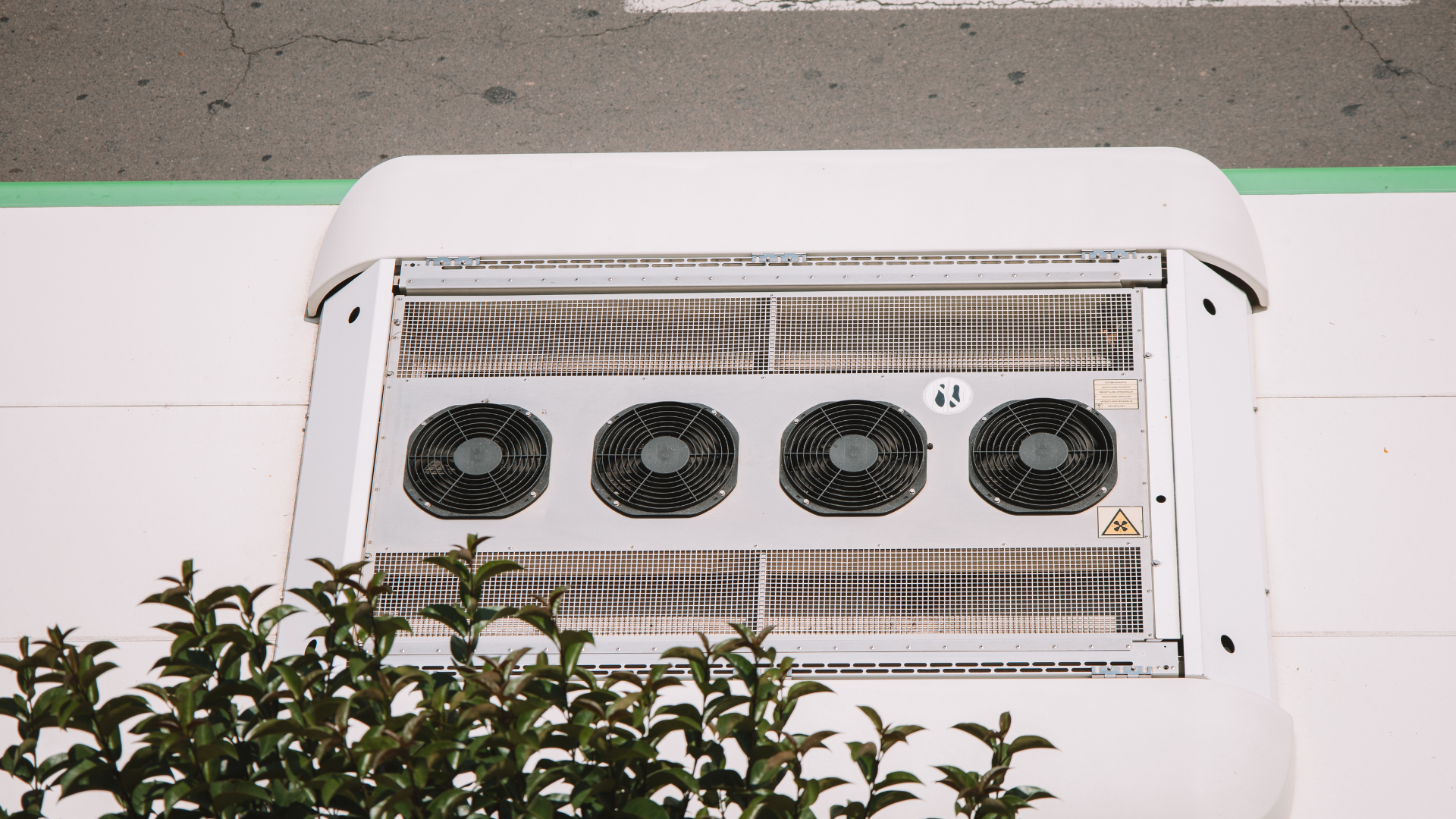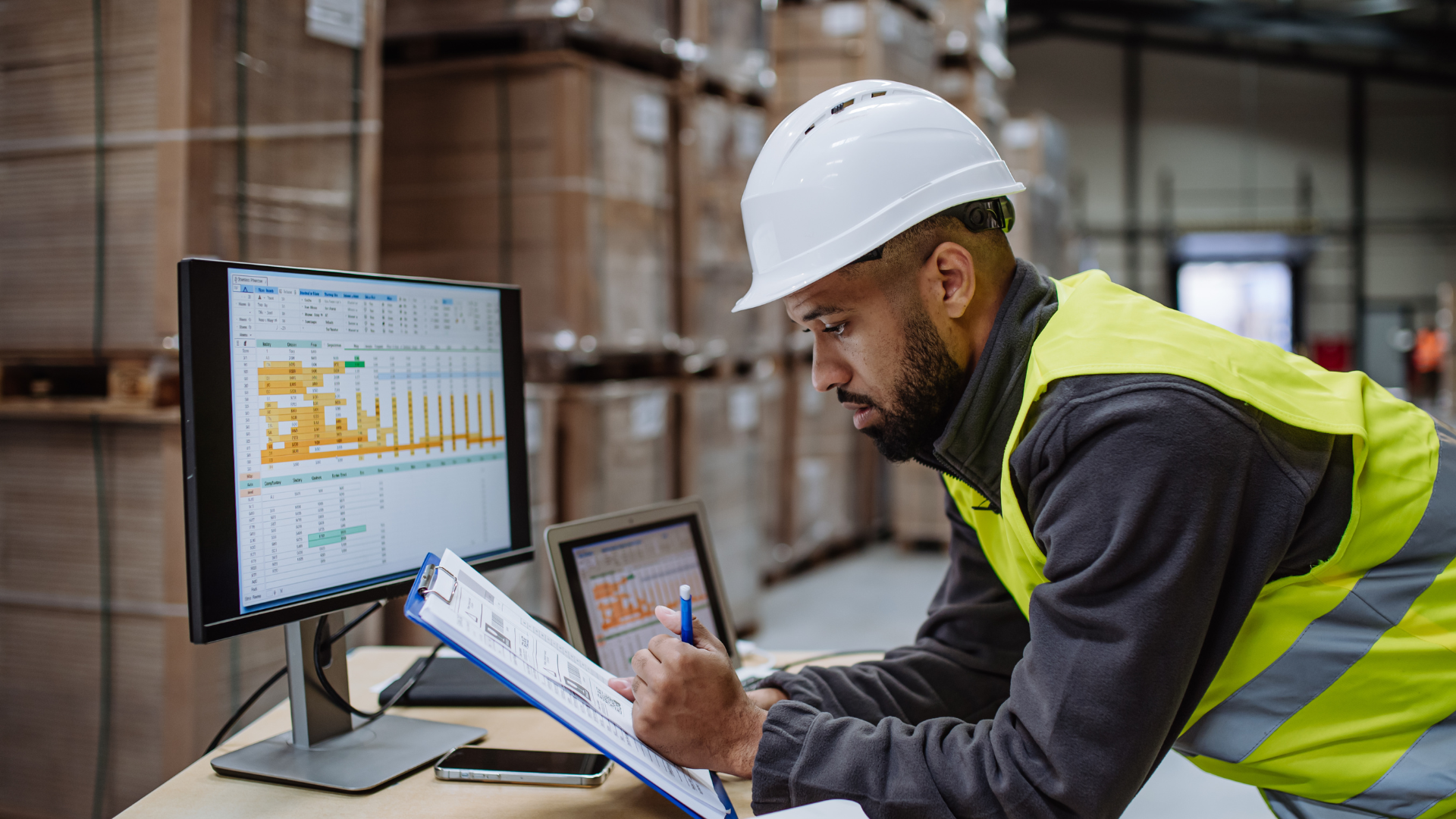The Future of HVAC: IoT, Smart Thermostats and More
A few years back, your phone was just a way to call or text. Now, it’s the center of everything: music, reminders, and even your car keys.
Something similar is happening in HVAC. Smart thermostats and connected devices are becoming more than a fancy add-on; they are becoming the decision-makers.
Instead of waiting for the temperature to change and then reacting, these tools let you plan ahead, cut waste, and keep spaces comfortable in smarter ways. For
your business, this shift means new opportunities to work more efficiently and deliver more value to customers.
The Future of HVAC: Smarter, Connected, and Built for Efficiency
The HVAC industry is changing fast, and your thermostat has evolved from a wallflower to a blooming sunflower, talking to sensors, apps, and AI. These tools are designed to make the entire system run more smoothly, conserve energy, and prevent issues before they arise.
And this is what it looks like in practice:
- Smarter problem-solving: Systems can flag issues early, so you fix a failing part before it takes down the whole unit.
- Connected controls: Sensors, thermostats, and apps all work together, giving you real-time visibility into how the system’s performing.
- Lower energy bills: Smart thermostats learn habits and cut back on waste without you having to think about it.
- Better indoor comfort: AI fine-tunes airflow and temperature to keep spaces healthier and more comfortable while using less power.
The Key Takeaway:
- HVAC is moving from reactive to proactive. Instead of waiting for something to break, today’s systems are designed to stay ahead of the problem, saving time, money, and energy.
- Smart thermostats, sensors, and AI optimize heating and cooling, cutting energy consumption by up to 30% and lowering utility bills.
- Choose systems that can grow with your building’s needs and are easy for staff to use, ensuring maximum efficiency and long-term value.
The New Era of Smart HVAC Technology

Your thermostat can now learn your patterns and “guess” when you are coming home. Sensors talk to each other, ensuring a half-empty office is not cooled like a full one.
Now, having predictive maintenance is like having a mechanic inside your air system, spotting problems before you even hear a rattle.
1. From Thermostats to Smart Ecosystems
Smart thermostats can cut energy use by 10–15% annually.
What started with programmable thermostats allowing you to set a schedule and save a little money has adapted to your daily routines.
Now, HVAC has evolved into full ecosystems that have sensors to track occupancy and air quality, apps that give real-time control, and predictive software flagging issues before they even catch your eye.
2. Why Business Owners Can’t Ignore Smart HVAC
For a homeowner, smart HVAC means comfort. For a business owner, it means survival. Energy is often the second-largest expense of your payroll, and smart systems help reduce waste that would otherwise go unnoticed.
Considering sustainability requirements and customer demand for greener operations, ignoring smart HVAC is no longer realistic. It has become more than just improving air quality; it has become a competitive advantage.
Check out: The Ultimate Guide to Starting an HVAC Business
Why Smart HVAC Technology Is a Game-Changer
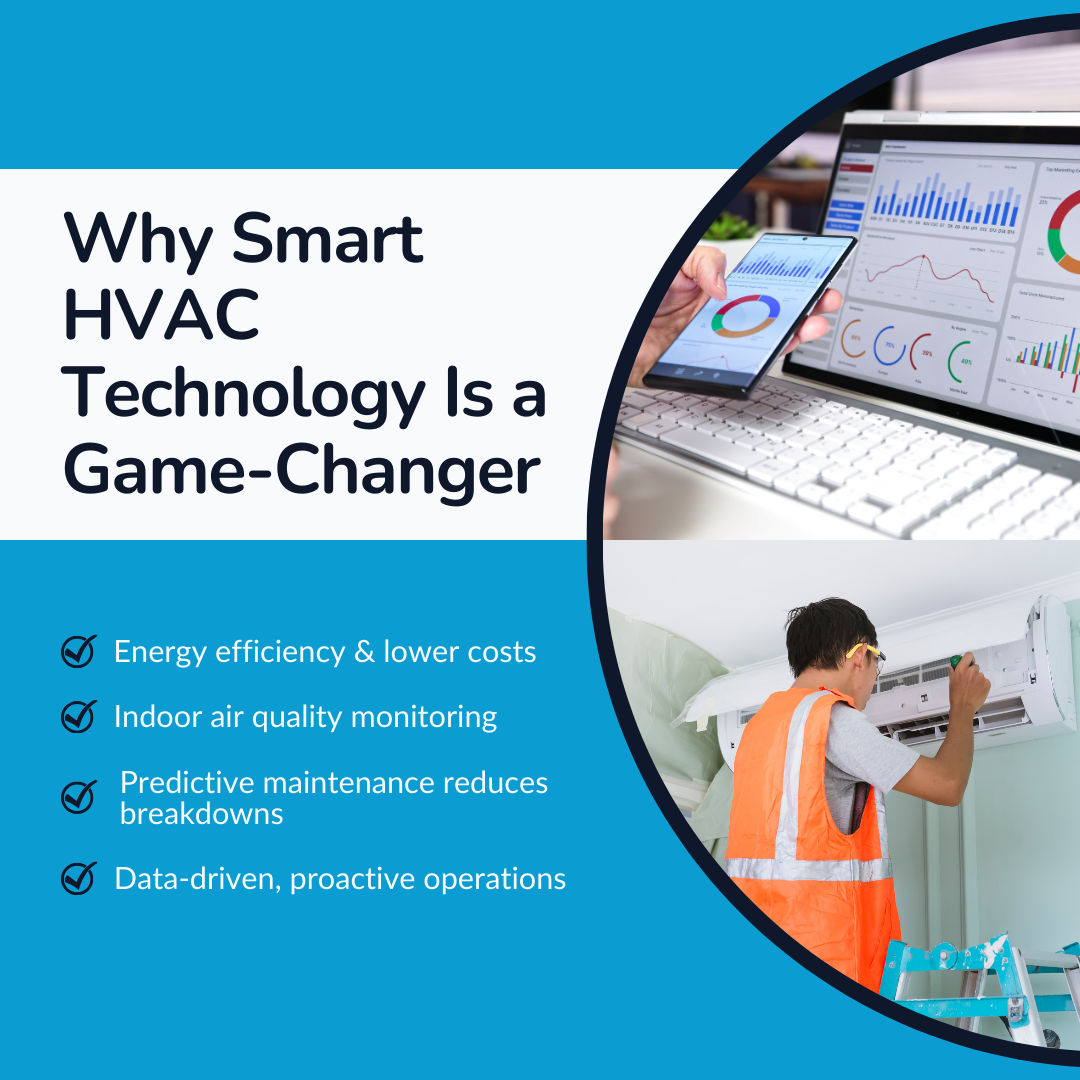
Today, HVAC systems can adjust themselves in real time using smart sensors, weather data, and machine learning. That means they keep an eye on energy use, air quality, and even their own health.
The payoff? Lower energy costs, fewer breakdowns, and spaces that stay more comfortable without anyone having to think about it.
1. Energy Efficiency and Cost Savings
Traditional air conditioning systems often run at full blast even when spaces are empty, leading to wasted energy. Smart HVAC systems help chip away at that bill by adjusting output to match what’s really happening in the building.
- If a room’s empty, the system eases back instead of wasting energy.
- If the sun is baking one side of the building, sensors shift airflow to balance things out.
- If the weather suddenly cools off, the system dials itself down without you touching the thermostat.
These small adjustments add up. In fact, the Department of Energy estimates that smart controls can reduce HVAC energy use by 30%. That’s money back in your pocket without sacrificing comfort.
2. Indoor Air Quality Monitoring
Modern systems now track things like CO₂ levels, humidity, and even certain pollutants.
That’s especially important in places like schools, gyms, and offices, where stuffy air can hurt focus or even cause complaints. A smart system can bring in fresh air or adjust filtration before anyone notices a problem.
For businesses, it’s a double win: healthier air for staff and customers, plus the ability to show you’re proactive about indoor air quality.
3. Predictive Maintenance with Machine Learning
Nobody likes the 95-degree day phone call: “The AC’s dead.” Emergency breakdowns are costly, stressful, and often occur at the worst possible time.
Smart HVAC takes a different approach. By watching performance data, the system can spot early warning signs, maybe a fan motor drawing more power than usual, or a compressor cycling too often. Instead of running until failure, it raises a flag early.
That means fewer surprise breakdowns, longer equipment life, and fewer after-hours service calls. It’s a shift from “fix it when it breaks” to “fix it before it breaks.”
5 Ways Smart HVAC Transforms Business Operations
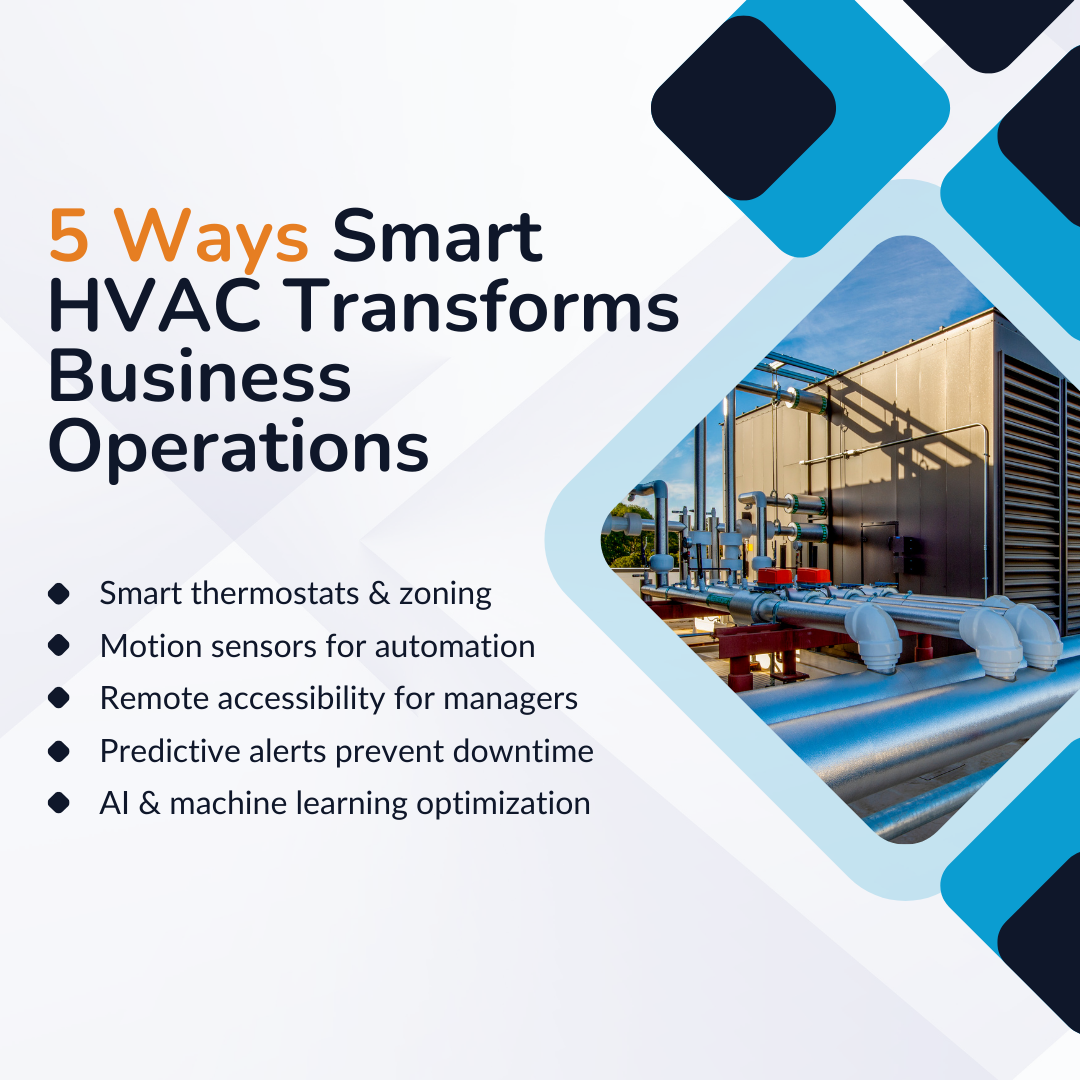
Smart technology has changed how businesses approach comfort and efficiency.
Instead of just heating and cooling, modern HVAC systems use data and automation to improve performance, lower costs, and simplify maintenance. For building owners and managers, this shift means more control, fewer surprises, and better long-term results.
1. Smart Thermostats and Zoning for Energy Usage
Smart devices like intelligent thermostats allow businesses to create zones, so only the spaces in use get conditioned air.
By matching output to demand, energy consumption drops without sacrificing comfort, and over time, HVAC users save significantly on utility bills.
2. Motion Sensors to Automate Heating and Cooling
With smart building technology, motion sensors can detect when a room is empty and adjust settings automatically.
This prevents wasted energy and makes the system more responsive when occupants return, keeping comfort levels steady while lowering operating costs.
3. Remote Accessibility for Monitoring & Control
Remote control access gives facility managers the ability to adjust settings and check system status from anywhere. Paired with smart HVAC control platforms, this makes it easier to respond to issues quickly, avoid after-hours trips, and keep performance consistent.
4. Predictive Alerts for Faster Response
With traditional HVAC systems, problems usually show up as surprise breakdowns. Smart systems, by contrast, track performance data and raise flags before a failure occurs as they continuously monitor performance data.
When something looks off, such as a fan working faster than usual or airflow dropping, predictive alerts notify staff before a breakdown happens. This proactive approach cuts downtime and extends equipment life.
5. AI & Machine Learning for Long-Term Optimization
AI and machine learning continually improve modern systems over time. By analyzing patterns, HVAC systems can optimize schedules, balance comfort with efficiency, and reduce overall energy consumption year after year.
Also read: How Commercial HVAC Service Software Streamlines Fieldwork
What to Look for in Smart HVAC Systems
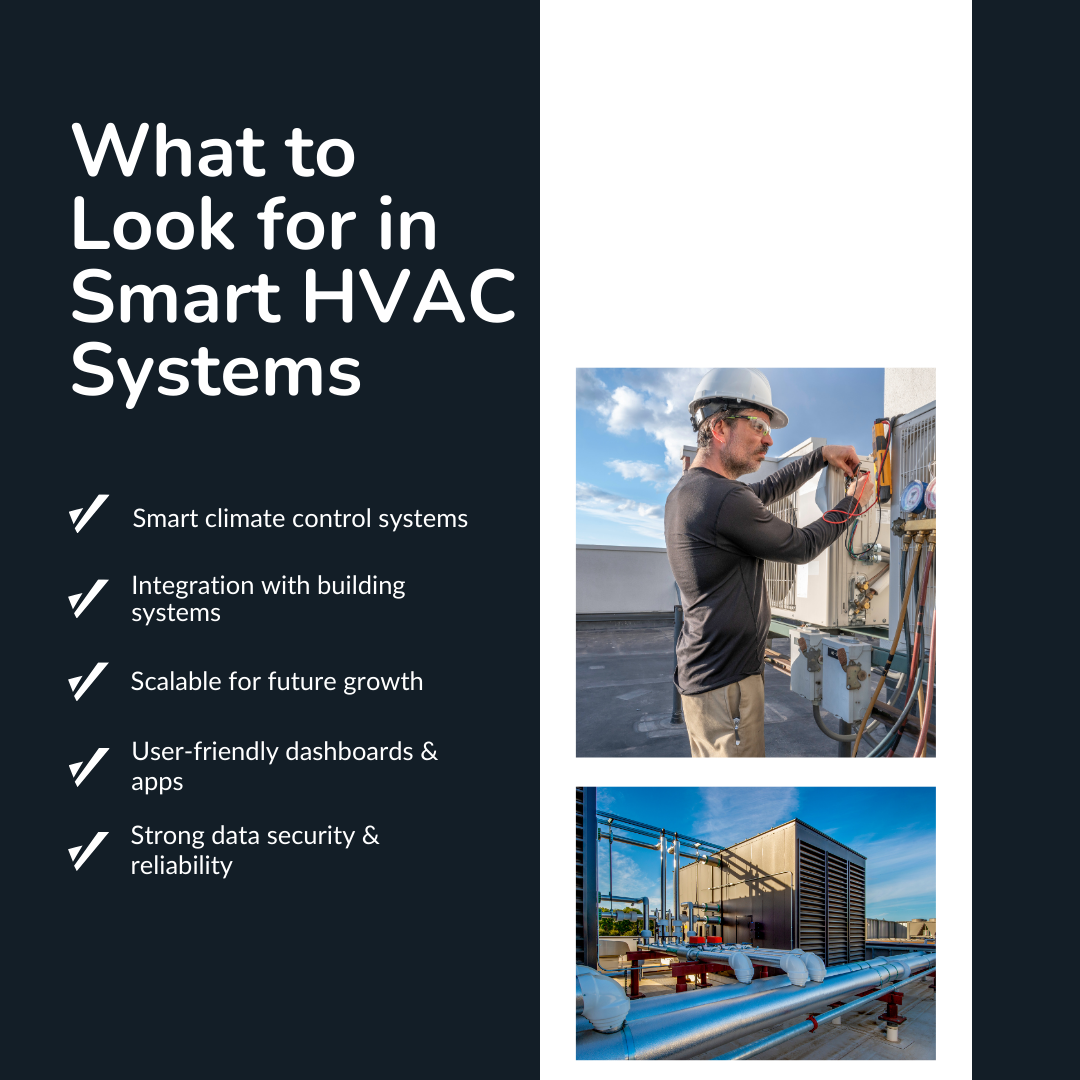
Not every solution is built the same, and while modern smart HVAC systems offer a wide range of features, the best ones are those designed to fit your building, support your staff, and align with your long-term goals.
When evaluating options, it’s worth focusing on the factors that enhance energy efficiency, reduce energy consumption, and ensure the system integrates smoothly with your operations.
1. Smart Climate Control Systems
At the core of any advanced setup are smart climate control systems, which automatically adjust heating and cooling based on occupancy, schedules, or even outdoor weather conditions.
Instead of running at the same level all day, they respond to what’s actually happening in the building.
2. Integration with Other Building Systems
Efficiency improves even further when HVAC doesn’t work in isolation. A smart system that connects with lighting, security, or other smart building technology allows managers to oversee multiple functions from a single platform.
3. Scalability for Growth
A scalable system can expand as your facility grows, whether that means adding new zones, connecting additional sensors, or extending control across multiple buildings. Choosing a platform with built-in flexibility helps protect your investment long term.
4. User-Friendly Interfaces
Even the most potent features lose their value if staff can’t use them. Look for dashboards and mobile apps that present real-time data clearly, including energy consumption trends and system health.
A user-friendly design makes it easier for teams to make quick adjustments, spot inefficiencies, and stay in control without needing technical expertise.
5. Data Security and Reliability
Since smart devices depend on connectivity, strong security is essential. The best providers back their technology with encrypted data protection, regular software updates, and responsive customer support. That combination ensures your system remains reliable and your building operations stay protected.
Check out: HVAC Project Management 101: Tools, Tips, and Software
The Future Outlook for Smart HVAC
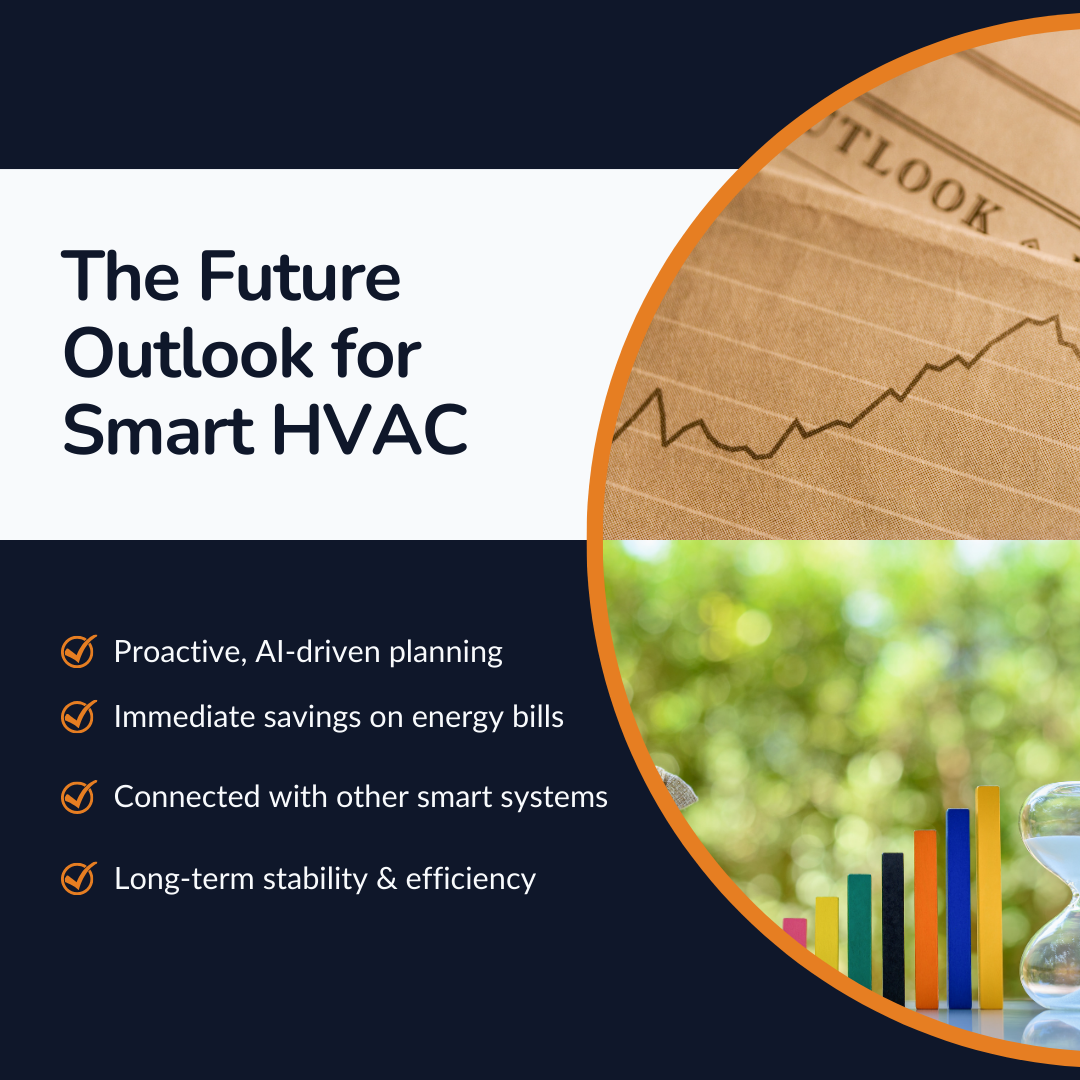
Smart HVAC is still in its early stages, but the technology is advancing quickly. In the coming years, systems won’t just respond to thermostat changes; they’ll use
AI to analyze years of performance data and guide long-term planning, from energy strategies to equipment upgrades.
For businesses, that means savings in two ways: immediate reductions on utility bills and greater stability over time. Smart HVAC users save money today through smarter energy use.
Still, the bigger value comes as these systems connect with other building technologies, creating a more efficient and reliable operation overall.
The decision, then, isn’t whether to invest, it’s when. And the sooner businesses make the shift, the sooner they benefit from both today’s savings and tomorrow’s innovations.
How HVACBase Helps Bring Smart HVAC to Life
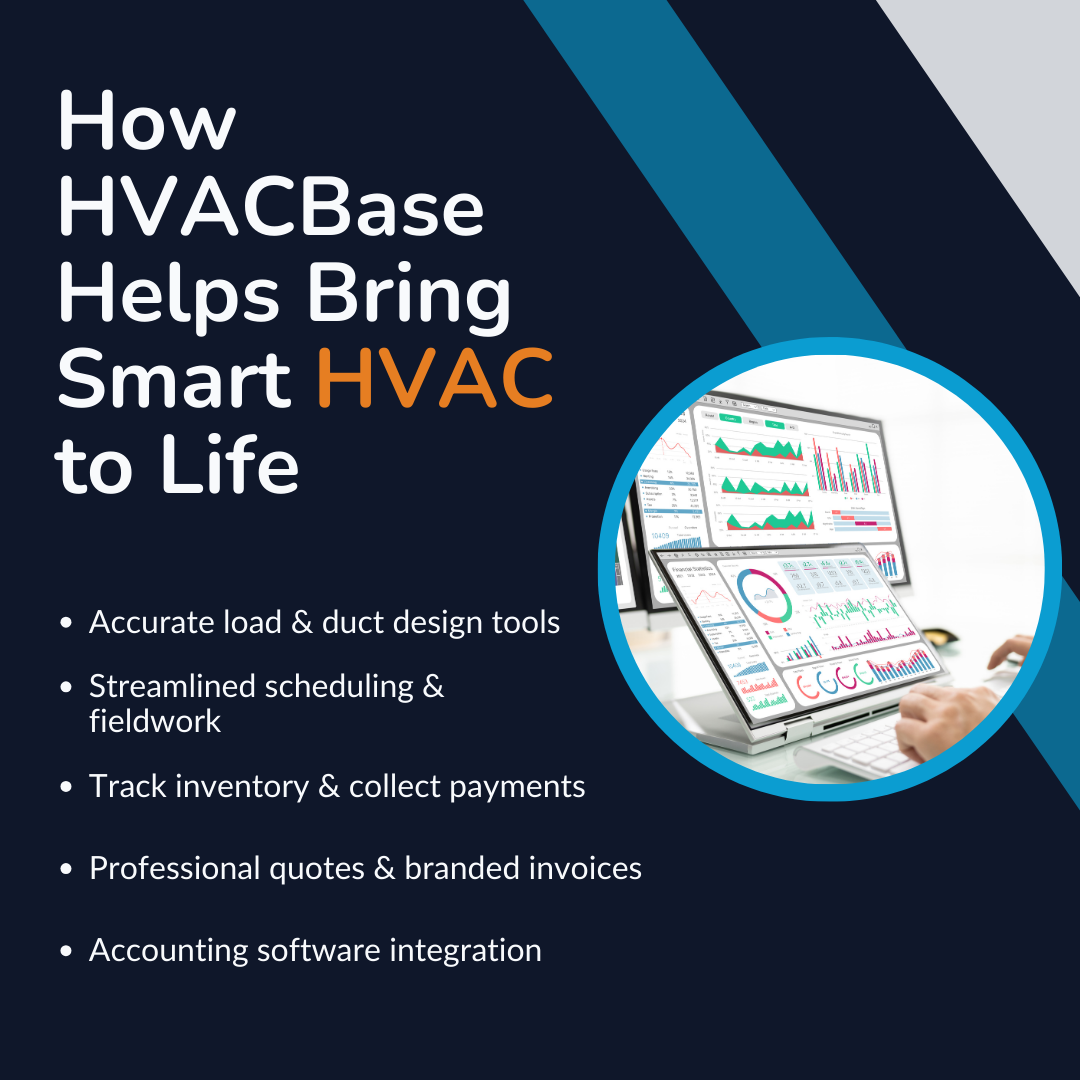
Putting smart HVAC into practice can be a challenge, but HVACBase bridges that gap with tools tailored for HVAC professionals. From the office to the field, it combines system design, job management, and financial tools into one streamlined platform.
With HVACBase, contractors can:
- Design and size HVAC systems accurately with built-in load calculation and duct layout tools.
- Streamline operations and fieldwork by scheduling jobs, dispatching technicians, tracking inventory, monitoring job performance, team efficiency, and collecting payments, all from a single dashboard and mobile app.
- Simplify quoting and invoicing through professional proposals, branded invoices, and direct integration with accounting software.
- Centralize customer interactions with an all-in-one CRM, tracking leads, job history, and communication—all within a unified customer management system.
- Empower field technicians with a mobile app, enabling them to access job details, upload photos, collect e-signatures, and capture payments on the spot.
Summary
HVAC technology has moved far beyond simple heating and cooling. Smarter systems now give businesses and homeowners better comfort, lower costs, and fewer surprises by predicting issues before they happen and adjusting performance automatically.
The shift is clear: instead of reacting when something goes wrong, HVAC can now be managed proactively. For contractors, that means new opportunities to deliver value and reliability. And for building owners, it means greater peace of mind knowing their systems are working smarter in the background.
Ready to Take Action?
Explore how HVACBase can help you cut costs, improve comfort, and simplify operations. Book your demo today.
FAQs
1. How is a smart HVAC system different from a traditional one?
Traditional systems react when you adjust the thermostat. Smart HVAC systems use sensors, data, and automation to make adjustments automatically, which helps save energy and improve comfort without constant manual input.
2. Do smart HVAC systems really save money?
Yes. By adjusting output to match actual demand, reducing wasted energy in empty spaces, and catching problems early, smart systems help lower utility bills and reduce costly emergency repairs.
3. Can smart HVAC work with my existing equipment?
In many cases, yes. Smart thermostats, sensors, and control platforms can often be added to existing HVAC equipment. For larger upgrades, a contractor can assess whether integration or a new system makes the most sense.
4. What should I look for when choosing a smart HVAC solution?
Key factors include ease of use, energy efficiency, integration with other building systems, and long-term support from the provider. Platforms like HVACBase give contractors the tools to manage design, service, and operations in one place.
Have questions or need personalized advice?
Talk to an Expert Today and let our construction specialists guide you to success.



